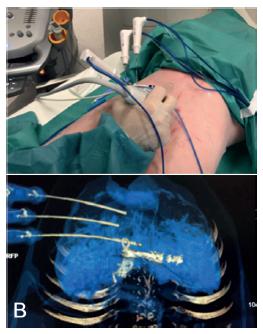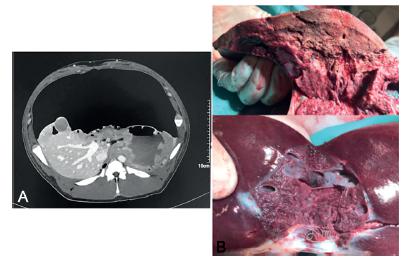ABSTRACT
Background:
When a major hepatic resection is necessary, sometimes the future liver remnant is not enough to maintain sufficient liver function and patients are more likely to develop liver failure after surgery.
Aim:
To test the hypothesis that performing a percutaneous radiofrecuency liver partition plus percutaneous portal vein embolization (PRALPPS) for stage hepatectomy in pigs is feasible.
Methods:
Four pigs (Sus scrofa domesticus) both sexes with weights between 25 to 35 kg underwent percutaneous portal vein embolization with coils of the left portal vein. By contrasted CT, the difference between the liver parenchyma corresponding to the embolized zone and the normal one was identified. Immediately, using the fusion of images between ultrasound and CT as a guide, radiofrequency needles were placed percutaneouslyand then ablated until the liver partition was complete. Finally, hepatectomy was completed with a laparoscopic approach.
Results:
All animals have survived the procedures, with no reported complications. The successful portal embolization process was confirmed both by portography and CT. In the macroscopic analysis of the pieces, the depth of the ablation was analyzed. The hepatic hilum was respected. On the other hand, the correct position of the embolization material on the left portal vein could be also observed.
Conclusion:
“Percutaneous radiofrequency assisted liver partition with portal vein embolization” (PRALLPS) is a feasible procedure.
HEADINGS:
Embolization; Hepatectomy; Radiofrequency; Portal vein.






